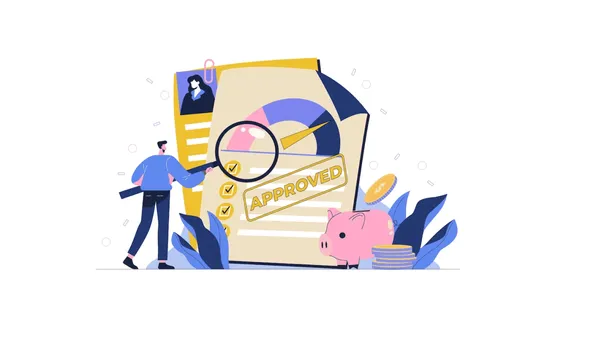Navigating the world of finance isn’t always straightforward, especially when it comes to understanding how tax-free income works in India. With new financial policies for 2024-25, many taxpayers are eager to understand the nuances of tax exemptions, deductions, and other relief measures that can help reduce their taxable income. In this comprehensive guide, we explore everything from fundamental concepts to practical tips on maximizing your tax-free income. Whether you’re a salaried professional, a freelancer, or a small business owner, this article will equip you with the knowledge to plan your finances effectively and enjoy more disposable income.
Why Tax-Free Income Matters
Imagine beginning the financial year with a clear roadmap that not only reduces your taxable income but also empowers you to invest and save wisely. Achieving tax-free income is not just about enjoying immediate savings—it’s about long-term financial stability. When you lower your tax liability, you channel more money into investments, better health insurance, education, or emergency savings. In a way, it’s a financial win-win that supports your short-term goals as well as your future plans.
With the evolving tax laws and frequent revisions in exemption limits, staying informed is crucial. In 2024-25, the government has introduced several changes that affect various segments of taxpayers. Let’s unpack what these changes mean and how you can leverage them.
Key Components of Tax-Free Income in India
Tax-free income essentially refers to portions of your income that are exempted from taxation under the Income Tax Act. These exemptions are categorized under different sections and apply to diverse income sources. Important components include:
1. Basic Exemption Limit
Every taxpayer in India is entitled to a basic exemption limit. For individuals below a certain age and income, the government sets an income threshold (which may vary by age group and residency status) below which no tax is charged. In 2024-25, this exemption limit is designed to provide relief to low and middle-income groups, ensuring that those who earn modestly are not overburdened by tax liabilities.
2. Standard Deduction
The standard deduction is a flat deduction available to salaried employees and pensioners. In addition to the basic exemption, the standard deduction helps reduce taxable income further and is updated periodically to reflect economic changes. For many taxpayers, this deduction means less paperwork and greater clarity in tax calculations.
3. Specific Exemptions on Various Income Sources
Several sections of the Income Tax Act offer specific exemptions that can be categorized into:- House Rent Allowance (HRA): Employees receiving HRA can claim a tax exemption based on actual rent paid, salary details, and location of residence.- Leave Travel Allowance (LTA): Travel expenses incurred by employees can be exempted under LTA, subject to certain conditions.- Other Allowances and Perquisites: Reimbursements for telephone bills, internet usage, uniforms, and certain other perquisites may also qualify as tax-free income.
4. Deductions under Chapter VI-A
Beyond the glossary of allowances, numerous deductions can be claimed under sections such as 80C, 80D, and 80G. These deductions cover investments in life insurance, contributions to pension schemes, health insurance premiums, donations, and more:- Section 80C: Investments in instruments like Public Provident Fund (PPF), Employee Provident Fund (EPF), National Savings Certificates (NSC), and life insurance premiums.- Section 80D: Deduction for premiums paid towards health insurance for self, spouse, children, or parents.- Section 80G: Deduction for donations made to charitable institutions.
These measures are aimed at making tax planning more structured while providing incentives to invest in savings, secure your health, and support social causes.
How Changes in 2024-25 Affect Your Tax Planning
Every financial year brings its own set of adjustments in exemptions and deductions based on economic conditions and government policies. The 2024-25 fiscal year isn’t an exception, with several key changes that impact how taxpayers plan their finances.
Enhanced Basic Exemption Limits
Recently, there have been discussions about revising the basic exemption limits to offer more relief to individuals earning lower incomes. For many, this means that a larger portion of their income will remain untaxed, leaving more money in their pockets for savings and reinvestment.
Updates to Standard Deductions
Standard deductions have been tweaked by the government to better reflect the inflation and rising costs of living. This update benefits salaried employees and pensioners, allowing them to deduct a fixed amount from their gross income without the need for extensive documentation.
New Norms for Specific Allowances
Rules regarding HRA and LTA have been refined, providing greater clarity on what qualifies as exempt income. For employees in metropolitan areas, where rent is considerably high, the updated guidelines help in calculating a more precise HRA exemption. Similarly, the guidelines for Leave Travel Allowance have been simplified, ensuring that travelers do not overcomplicate the process of claiming tax benefits.
Increased Caps on Deductions
In certain cases, the caps on deductions under sections like 80C and 80D have been increased. This gives taxpayers the flexibility to save more and invest in long-term instruments without exceeding the maximum allowable limits. For instance, investing in government-backed pension schemes or securing a comprehensive health insurance policy can now result in higher deductions, thereby reducing the taxable portion of your income.
Practical Tips for Maximizing Your Tax-Free Income
Achieving tax-free income is not a one-time task; it requires proactive planning and regular review of your financial strategy. Here are practical tips that can help you optimize your tax savings for the financial year 2024-25:
Strategic Investment Planning
- Prioritize Long-Term Savings: Invest in options that not only yield tax benefits but also ensure long-term financial stability. Options like PPF, EPF, and National Pension System (NPS) are excellent tools for both saving and reducing taxable income.
- Diversify Your Portfolio: While conventional instruments remain popular, consider diversifying your investments. Mutual funds, Sukanya Samriddhi Yojana (for parents of a girl child), and tax-saving fixed deposits can secure your future while offering tax relief.
- Keep Updated on Regulatory Changes: Tax laws evolve years by year. Subscribe to financial newsletters, attend webinars, or consult with a tax professional to stay informed of any changes that could impact your deductions and exemptions.
Maximizing Allowances
- HRA and Rent Agreements: If you live in a rented accommodation, ensure that your rent receipts are well-maintained. This will help in accurately calculating the HRA exemption. Familiarize yourself with the latest HRA guidelines, especially if you reside in a high-rent area.
- Utilize LTA Effectively: Plan your travel in a way that allows you to take advantage of the Leave Travel Allowance. Collect receipts, maintain travel documentation, and calculate the eligible amount correctly.
- Monitor Other Benefits: Make sure that any allowances provided by your employer (such as conveyance or special allowances) are optimized to reduce your taxable income. Sometimes, minor adjustments in salary structure can lead to substantial tax benefits.
Leverage Digital Tools
Modern technology has simplified the tax filing process significantly. Use reputable tax preparation software or online tax filing portals that automatically calculate your exemptions and suggest optimal deductions. Not only do these tools reduce the chances of human error, but they also save considerable time when filing your return.
Record-Keeping and Documentation
Keeping meticulous records is key to claiming all eligible deductions and exemptions. Maintain digital and physical copies of:- Salary slips and Form 16- Rent receipts and relevant rental agreements- Investment proofs (such as insurance premium receipts, bank statements, and receipts for donations)- Medical bills and health insurance policy documents
Proper documentation ensures that in case of an audit, you have all the required evidence to justify your claims.
Addressing Common Concerns and Misconceptions
There are several myths when it comes to tax-free income, and clearing these up can help you plan better.
Myth 1: Only High Earners Need Planning
Many assume that tax planning is only for high-income individuals. In reality, even those with modest incomes can benefit immensely from strategic tax planning. Maximizing exemptions and deductions ensures that you pay only your fair share, not an extra rupee.
Myth 2: Tax Benefits are Complicated and Inaccessible
While tax laws can appear complex at first glance, many provisions are designed to simplify compliance for individuals. Digital platforms and expert advisory services have transformed the often-daunting process into a user-friendly system that ensures you don’t miss out on entitled benefits.
Myth 3: Changes in Tax Laws Don’t Affect Me
Even small modifications in exemption limits or deduction caps can have a significant impact on your overall tax liability. Regularly reviewing your tax planning strategy is crucial as these incremental changes can lead to substantial savings over time.
Future Outlook and Final Reflections
The financial landscape in India is continually evolving, with new policies and reforms introduced each year. The tax-free income provisions for 2024-25 reflect the government’s ongoing commitment to creating a more equitable and simplified tax system. By focusing on strategic investments, keeping abreast of changes in tax laws, and leveraging digital tools, you can turn the complex web of tax regulations into a roadmap for financial success.
For policymakers, the emphasis on increased basic exemption limits and enhanced caps for deductions signals a shift towards a more person-centric tax regime. For taxpayers, it means more opportunities to retain your earnings and use them for investments that pave the way for a secure future.
Action Steps:
- Review your current financial portfolio and align it with the updated tax rules.
- Consult a tax professional if you have a complex income structure or if you’re unsure about the strategies that best suit your needs.
- Utilize online tax filing systems to ensure that you capture every exemption and deduction.
- Keep a regular check on government announcements and policy updates that could affect your tax planning.
Conclusion
Tax-free income isn’t just a buzzword—it’s a powerful tool that can transform your financial health for the year 2024-25. By understanding the basics, taking advantage of key allowances and deductions, and actively planning your investments, you can reduce your taxable income significantly. This not only results in immediate savings on tax payments but also sets the stage for long-term financial growth.
Remember, financial planning is a journey. Whether you’re a seasoned taxpayer or a newcomer, the essential steps remain the same: stay informed, plan ahead, and leverage all available tools to maximize your tax-free income. As the tax landscape shifts in subtle yet impactful ways, let your strategy evolve too. Embrace a proactive approach, and you’ll turn tax planning from a challenging chore into an opportunity for wealth creation.
With this guide at your side, you’re well-equipped to navigate the intricacies of income tax for 2024-25. Enjoy the benefits of a well-planned financial future and make every rupee work for you.
Happy planning and here’s to a financially rewarding year ahead!




.webp)

.webp)



.webp)
.webp)
.webp)
.png)